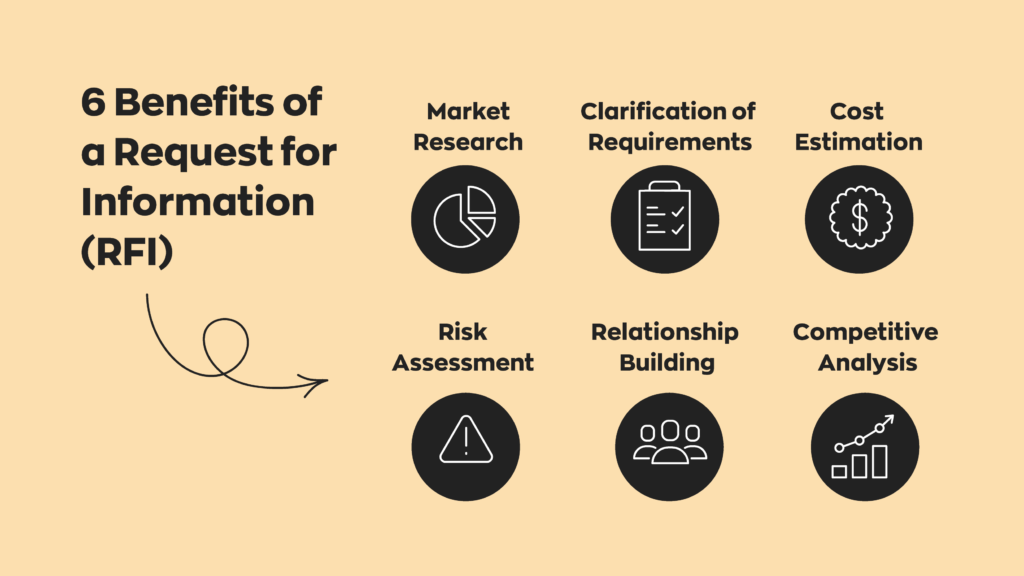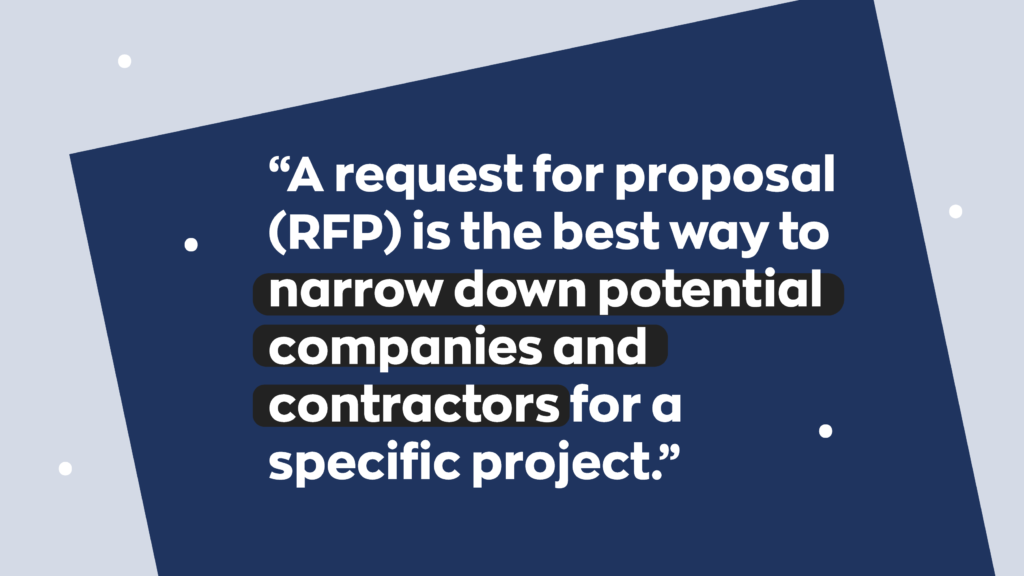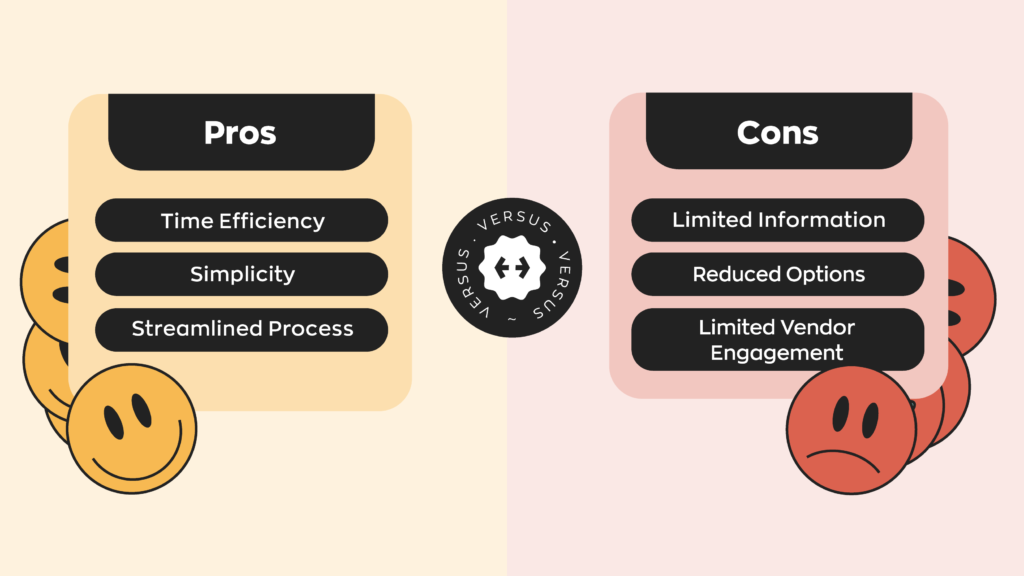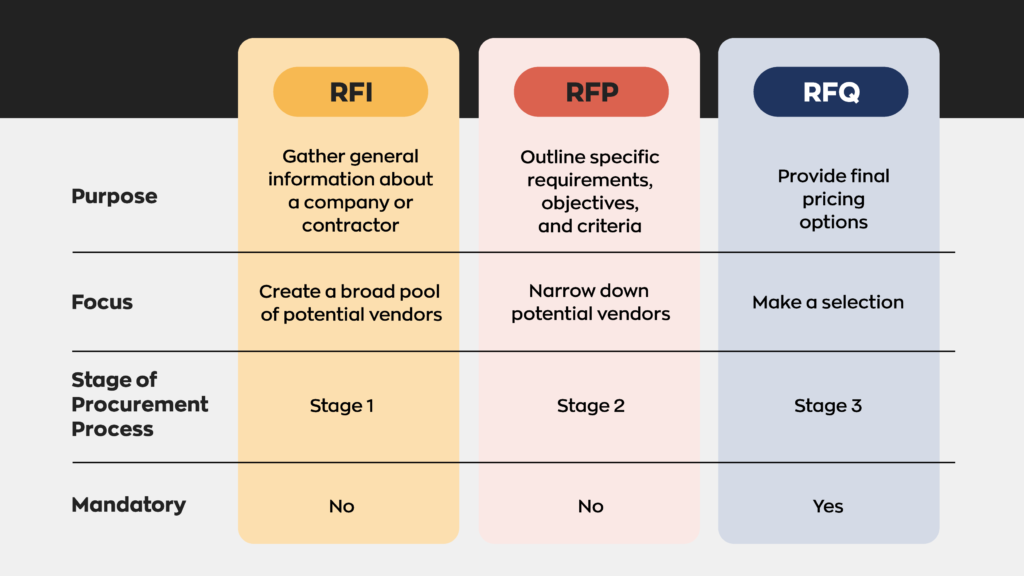Last week, we discussed the difference between quotes and estimates– essential for any contractor to know! This week we’re continuing the trend by comparing RFI vs. RFP vs. RFQ.
The terms request for information (RFI), request for quote (RFQ), and request for proposal (RFP), may have similar meanings, but the differences between the three are important. And not just for general contractors or field workers– for their customers, too! So: what is an RFI? What about an RFQ? What’s the difference between RFI vs. RFP? What is an RFI in construction?
There’s a lot of information to go over here, so let’s get right into it!
What is a request for information (RFI)?
A request for information (RFI) is the first step in the vendor selection process and is exactly what it sounds like; a request for information. Yes, really! Unfortunately, however, it’s not that simple. While it may seem self-explanatory, an RFI is often the first step in establishing a working relationship between a field service worker and a customer.

When a company or individual sends an RFI to a business, they usually include a few things. After a table of contents, the sender will describe the problem they’re attempting to solve. Or the need that they’re trying to fulfill. Afterwards, they’ll detail the buyer’s requirements, a desired timeframe, etc.
It’s best to send a standardized RFI to companies or contractors to ensure you have similar documents returned to you. This will make comparing the various RFIs easier when it comes time to make a selection. Now let’s talk about what an RFI in construction is.
What is an RFI in construction?
In the construction industry, though, the term RFI has a different meaning. Construction projects take a long time. They also involve quite a few other parties. You’ll need electricians to install powerlines, plumbers to lay pipe, and so on.
Each of these trades uses different schematics and works at completely different times. As a result, there tend to be gaps in the documentation between the concerned parties. A contractor would send an RFI to identify these gaps and ensure everyone completes everything correctly.
Outside of this, field workers will also send RFIs when they need clarification from another party. Some drawings or schematics might need to be clarified or might not match up to expectations. They could also be outdated or incorrect.
What is a request for proposal (RFP)?
A request for proposal (RFP) is often required for larger-scale projects and gives clients a chance to gauge whether the contractor can finish a proposed project on time, up to standards and within budget. Rather than asking for information, an RFP presents a problem or project and asks for a solution.

Clients will often request several RFPs for a specific project and review several different submissions to find the company with the best proposal. Governments and enterprises often send RFPs for long-term projects that require a significant amount of resources.
An RFP evaluates how well a vendor can complete the project at hand. It should ask for a detailed timeframe, capital and resource costs, as well as labor costs.
RFI vs. RFP: what’s the difference?
Generally speaking, the biggest difference between RFI vs. RFP is the level of detail. While an RFI asks for general information, an RFP requests extremely specific information about the project at hand. In some instances, companies will use both. They’ll send an RFI to determine the suitability of a company or contractor and then send an RFP as part of the selection process.
What is a request for quote (RFQ)?
A request for quote, or RFQ, asks vendors to name their price. While RFIs and RFPs will likely contain some financial information, an RFQ will be a much more detailed breakdown of the financial cost. An RFQ will include a detailed breakdown of the product or service that the buyer wants to purchase.
RFQs give clients a rough idea of their project’s cost and sometimes offer multiple pricing tiers with different options for the customer to choose from. This is typically the last document a vendor receives before making a deal.
Keep in mind that quotes, once signed, are legally binding. So, both parties need to make sure they read them carefully before signing!

When to use RFI vs. RFP vs. RFQ
Each of these documents has its purpose. Depending on the circumstances, contractors may have to deal with an RFI, RFP, and RFQ; other times, they’ll skip directly to an RFQ. It depends on the project and just how complex it is. Here is a quick overview of when someone might use an RFI vs. RFP vs. RFQ:
- RFI – Use an RFI when asking for basic information about a project. Because RFIs don’t contain specifics, they’re often the first part of the bidding process. Many also use them to build a working relationship or make first contact.
- RFP – Use an RFP to assess a vendor’s ability to meet the project specifications. RFPs are a helpful way to put costs and decisions into context. They also provide a breakdown of the financial costs and can detail why a specific vendor was chosen. They’re an excellent way to understand how much the project will cost.
- RFQ – Use an RFQ when you have all the information you need, and you’re looking for a complete breakdown of what a project will cost and what pricing options are available.
Keep in mind that not every project or buyer will make use of these documents. For example, someone fixing their home is more likely to skip directly to a request for quote (RFQ) instead of assessing suitability. In that case, RFI vs. RFP doesn’t matter. That being said, most RFPs are a result of large-scale contracts, meaning they’re also part of the bidding process.
RFI vs. RFP: Why are these documents important?
There are a lot of reasons why your estimates need to be accurate. An incorrect price or estimate could be the difference between a customer choosing you or not. They also indicate your overall competency. The better you know your business, the better and more accurate your responses will be. In turn, this tells buyers whether you’re the right choice for the job.

How can you give more accurate estimates?
As important as it is to be accurate, figuring out a quote or estimate on the fly can be really difficult. You need to know what materials you’ve got on hand, how much they cost, and what equipment you’ll need for the job. All those different numbers can make it challenging to figure out a reasonable timeline, much less a quote. Field management software like inFlow can help anyone working in field services create more accurate RFIs, RFPs, and RFQs.
Our software enables you to calculate your cost of goods sold (COGS), track inventory levels, and provide several super helpful reports. It even comes with an included barcode system which you can use to scan your consumable components in and out and track all of your most valuable assets, so you know where everything is no matter where you are.






0 Comments